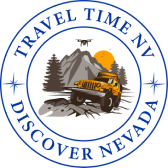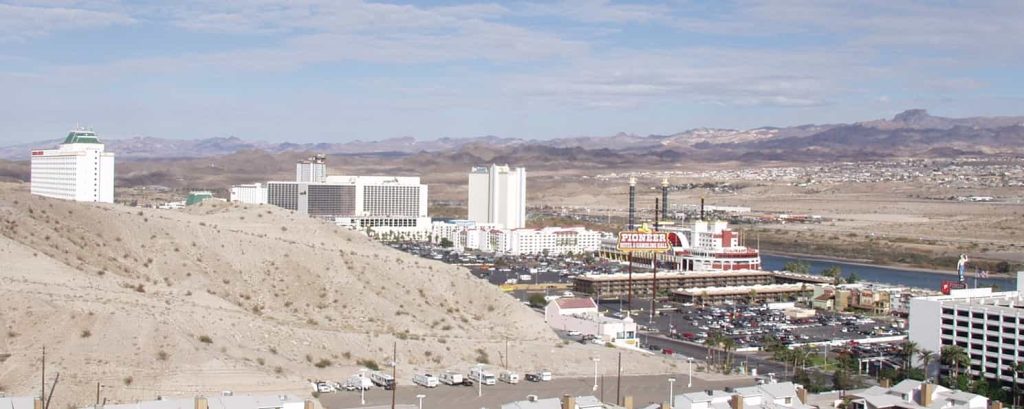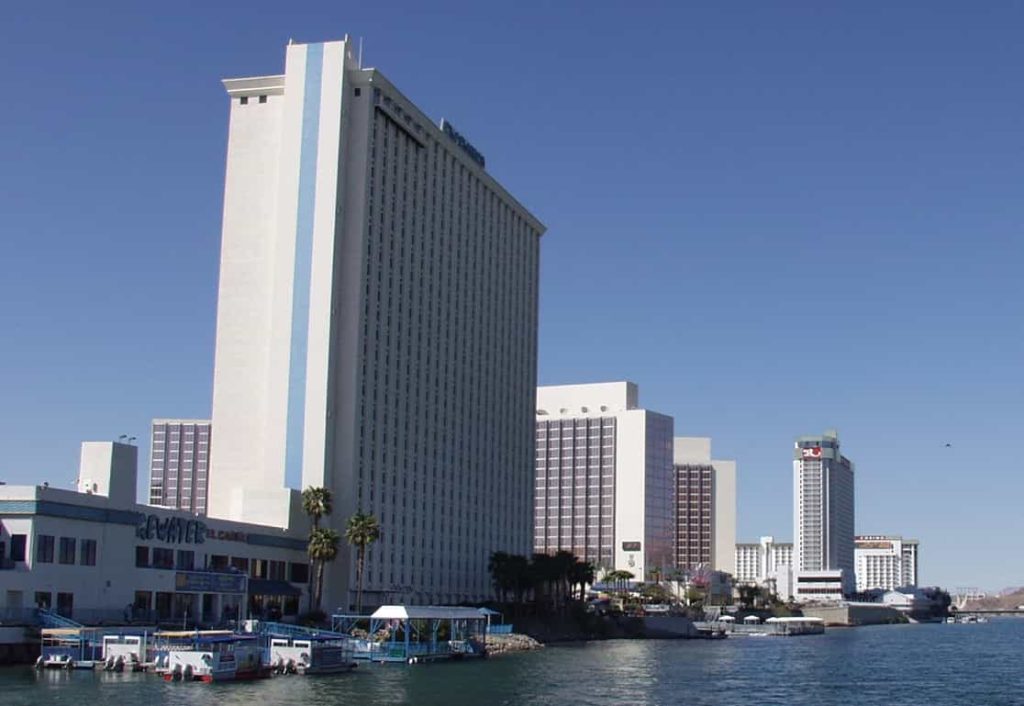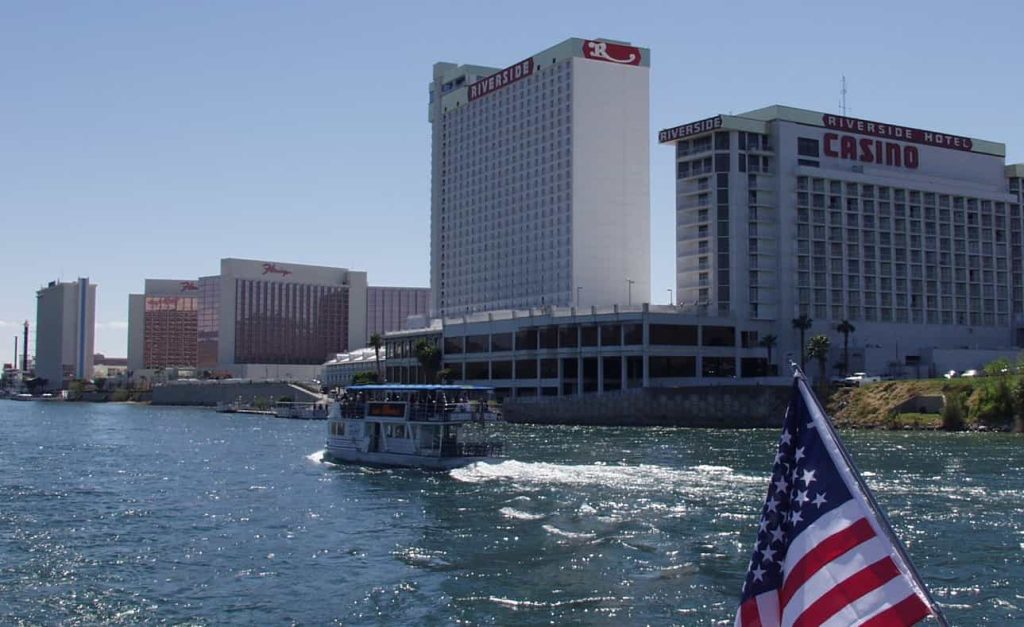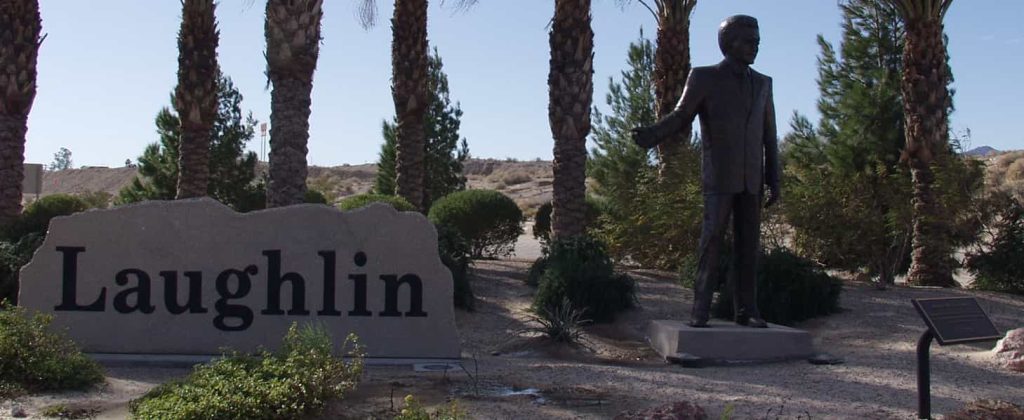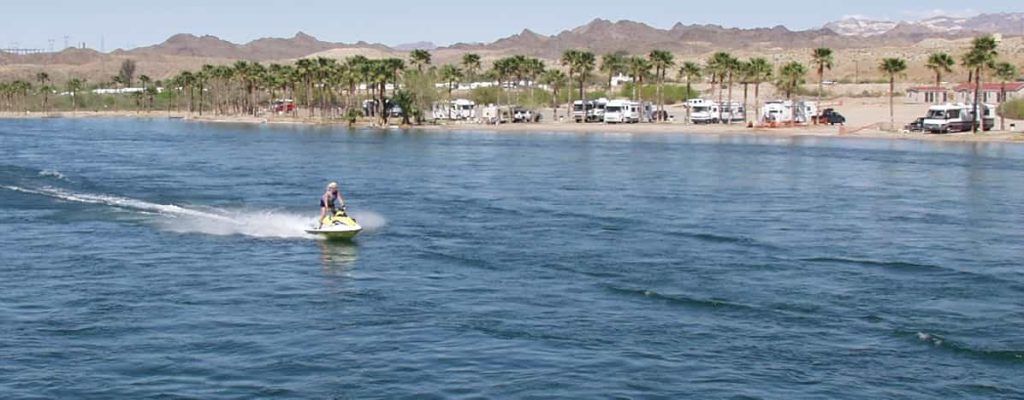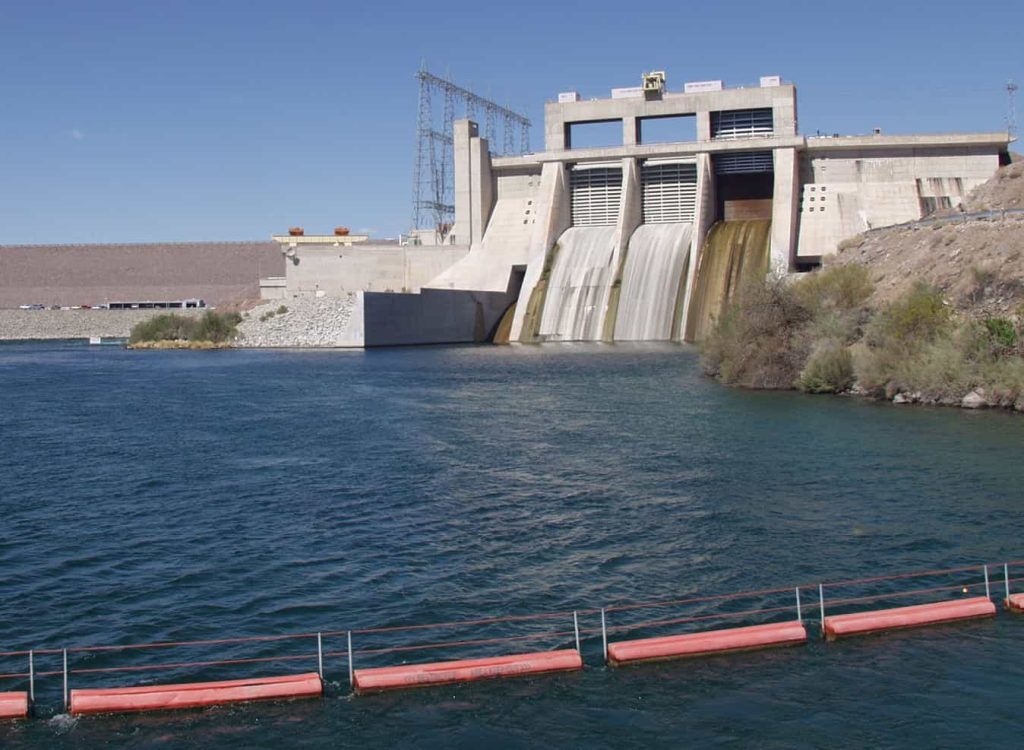Laughlin
Laughlin’s gambling excitement started in the mid-1960s with its first casino, The Riverside Resort. Casinos along the Colorado River have now built up to over 8 filled with entertainment venues.
At the Riverside Resort, Don Laughlin’s classic car collection is a must for car buffs. All types of entertainment include live bands, concerts, an indoor movie theater, a 34-lane bowling alley and a watch store. There are 740 full RV hook-ups at the resort.
In the evenings, take a stroll along the famous River Walk. Watch for wildlife — you might even spot a beaver in the river.
During the day, take the Laughlin River 90-minute Boat Tour along the Colorado River to learn about the area’s history, the Davis Dam and enjoy scenic views. There’s also jet skiing on the river and private boat tours.
There’s also the Laughlin outlet center where you can ‘shop til your drop’ by finding fantastic, discounted prices.
Depending on the time of year, hotel rooms can get completely sold out. There are a lot of senior bus tours who take advantage of the great room rates, plus there are events throughout the year that attract large groups.
For relaxation in a laidback atmosphere, Laughlin is the perfect spot for a 2-night get-a-way.
From Las Vegas, take the 95 South to Boulder City, stay on 95 South until you go 20 miles past Searchlight, turn left (East) on Hwy 163 for a total of 96 miles.
Laughlin can get very hot during the summer months
Bring lots of water and sun protection
Book your hotel room plenty of time in advance
Petroglyphs, rocks and other scientific data confirm Ancient peoples visited Laughlin in 3,000 to 4,000 B.C., but they weren’t playing the slots. Patayans, among the first Indians to inhabit the tri-state area, appeared about 900 A.D. Patayan is a Hualapai word meaning ancient ones. They eventually split into the Hualapai and Mojave tribes. Patayans pulverized a primary food source of seeds and plants on grinding stones and lived in brush shelters.
The National Park Service has located more than 150 Patayan campsites in the Lake Mojave area between Willow Beach (about 10 miles from the base of Hoover Dam) and Pyramid Canyon (the site of Davis Dam). The early Indians used sharply tipped stone weapons for hunting game and adorned themselves with gypsum ornaments, seashells and turquoise.
The Patayans did little farming. However, the Mojave Indians who followed planted crops in late winter and early spring along the banks of the Colorado River which were irrigated by annual floods. Many 20th Century Mojave Indians still live on reservations in the tri-state area. The Indian translation of mojave is people who live near the water. In 1540, Spanish explorer Melchi Diaz is believed to be the first non-Indian to visit the tri-state area.
In 1852, stern-wheelers were the fastest and safest mode of travel and steamboats cruised to the tri-state area from Port Isabel in the Gulf of California delivering supplies to miners and returning to port loaded with precious metals. It cost a traveler $44.00 ($1,275.00 in today’s dollars) to sail from what is now Bullhead City, Arizona, south to the Gulf of California and then north to San Francisco. In 1857, Lt. Edward Beale, hired to survey an immigrant road, established Fort Mojave near the present site of Bullhead City.
In 1864, William Harrison Hardy crossed the Colorado River and established a river port and supply center on Cottonwood Island. He operated the Colorado River Ferry and founded Hardyville and a year later, became the first postmaster. Hardyville was eventually destroyed by fire.
Numerous mines eventually pocked the area; the largest was the Katherine Gold Mine discovered in 1900. It operated intermittently until it closed in 1942 after producing $12 million worth of ore. Also, in the early 1900’s, the federal government investigated the possibility of constructing a dam in lower Pyramid Canyon. This eventually lead to the Congressional authorization of the Davis Dam Project. In 1935, the Hoover Dam, 67 miles upstream was completed. The Davis Dam’s construction contract was awarded in 1942 and completed in 1953. Its primary purpose is to regulate the flow of Colorado River water and power generation with five turbines that generate 48,000 kilowatts each.
Bullhead City started in the 1940s as a construction camp for Davis Dam. The community is named for Bull’s Head Rock, a geological formation used as a navigation point by steamboat captains. Several small communities sprung up including South Pointe, now known as Laughlin.
The Nevada gambling excitement didn’t start in this area until the mid 1960’s. Laughlin’s first casino, the Riverside Resort, used to be called the Riverside Bait Shop which became famous for its fried chicken. Nearby, there was a small casino called the Bobcat Club. In 1965, two entrepreneurs purchased these little gems. Oddie Loops bought the Bobcat Club, later renamed the Nevada Club. And, Don Laughlin, former owner of the 101 Club in Las Vegas, bought the bait shop for $250,000; this price included a boarded-up motel and 6.5 acres of river front property.
Because there was no bridge, parking lots were paved on the Bullhead side of the river and ferryboats started the river’s first shuttle service for gamblers and employees. Next came a power plant, The Mohave Generating Station, creating more jobs and growth. In, 1968, the U.S. Post Office insisted it was time to name the town. Contrary to Don Laughlin’s wish of naming it Riverside and Casino, the postmaster chose “Laughlin”. In ensuing years, many casinos sprung up including familiar names like Harrah’s and the Edgewater.

In 1987, with private funds, Don Laughlin built a $4.5 million dollar bridge connecting Laughlin to Bullhead City. This incredible feat bypassed the twisting road across Davis Dam which had allegedly claimed 42 lives in 20 years. He struggled for years trying to get State agencies and Federal approval. Laughlin explained, “Down here on a state line you’ve got two fish and game departments, two highway departments, and two of everything else. It took four and a half years to get the bridge approved by, I think, 38 different agencies. Only took us four months to build it.”
Donald (Don) J. Laughlin, was the Pioneer and Founding Father of the town of Laughlin. His vision in 1966 of the opportunities and growth for this area is what you see today.
A $23 million airport facility opened in Bullhead City in February 1991 with a 7,500-foot runway that accommodates Boeing 737s. Don Laughlin spent $9 million on flood control and airport planning and has donated 433 acres.
To this day, Laughlin remains a popular destination for seniors with its relaxed atmosphere, history and charm.
